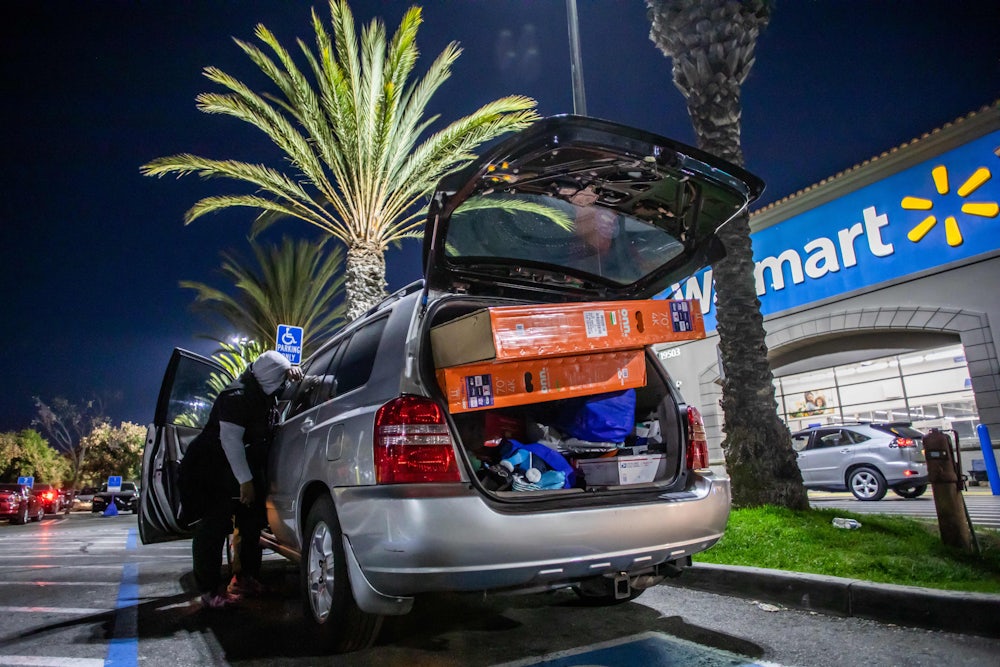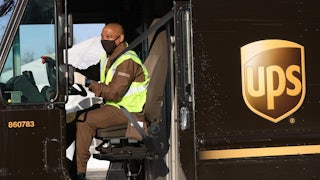“First thing you need to do,” a fellow retail worker told me my first day at Jerry’s Liquor in Santa Monica, California, during the summer of 1978, “is forget all that ‘the customer is always right’ crap. In this place, the customer is usually an asshole.” One or two nights later a dissatisfied patron started whacking at the plate glass storefront with a hunk of plywood. He staggered away before the cops came.
I think of my Jerry’s Liquor comrade every year on Black Friday, the busiest shopping day of the year, with its tableaux straight out of The Day of the Locust. The store employee knocked to the ground and trampled to death by eager shoppers. The woman who stabbed a guy fighting over a toaster. The woman who punched a pregnant woman fighting over a $200 TV. The website Black Friday Death Count, which compiles links to such news stories, tallies 17 deaths and 125 injuries on Black Friday going back to 2006.
Now there are signs that the Black Friday fever is starting to break. Covid-19 pushed down Black Friday sales in 2020 and 2021, with last year’s sales down 28 percent compared to pre-pandemic levels. Competition from online retailers is reducing foot traffic in brick-and-mortar stores, big holiday sales are getting stretched out over longer periods, and the outdoors retailer REI, which began experimenting in 2015 with staying closed on Black Friday, recently decided to make that policy permanent.
We may see a one-year uptick in Black Friday sales this year because Covid lockdowns are over and inflation has shoppers feeling more desperate than usual to find bargains. But even if we don’t, retail workers will have to contend with a rising tide of workplace violence. Pathological behavior by shoppers has been on the rise for years—not just on Black Friday, but on every day of the year. We may find ourselves relieved of Black Friday madness only to discover that every day is Black Friday.
Between 2018 and 2020 assaults in convenience stores and grocery stores rose 75 percent and 63 percent respectively, according to a June analysis of FBI data by The New York Times, compared to a 42 percent increase in assaults in all settings. Retail settings have become a routine magnet for active shooters; Tuesday’s Walmart shooting by an overnight manager in Chesapeake, Virginia, which killed six people, was only the latest. According to FBI data, last year’s deadliest active shooting incident took place at the King Soopers Grocery Store in Boulder, Colorado, where 10 people were killed.
One reason retail settings are favored to commit acts of violence may be staffing reductions attributable to the pandemic and increased automation (all those self-checkout machines). Even before the pandemic, employment in the retail sector was declining, according to the Bureau of Labor Statistics. It peaked in 2017 at around 16 million, bottomed out in April 2020 at around 13 million, and though it’s been climbing ever since, it’s still below the 2017 peak. Late-night workers, who typcally work alone, are especially at risk. A 2009 Occupational Safety and Health Administration report found no less than 15 percent of all workplace fatalities in the United States occurred in retail settings, usually at night.
Worker shortages pushed up wages for retail workers during the pandemic, with average hourly pay now $19.76. But retail is still the lowest-paying economy sector except hospitality (where shortages pushed up hourly wages to $18.10). Average hours worked in retail have fallen this past year from 31 to 30, and most retail workers still aren’t given predictable hours that allow them to schedule childcare and other necessities of life—even though a 2018 Harvard Business Review study of Gap workers found when schedules were made predictable, productivity rose 5 percent (this in an industry where productivity grew only 2.5 percent between 1987 and 2014).
So this Thanksgiving, do your fellow humans a favor. Tell your member of Congress to raise the hourly minimum wage to $15, up from the current measly $7.25. Stay home on Black Friday. And next time you find yourself in a brick-and-mortar store, be friendly and accommodating. These folks inhabit the economy’s lowest rung, they’re doing the best they can, and they’re subjected to unbelievable amounts of abuse 365 days a year.


